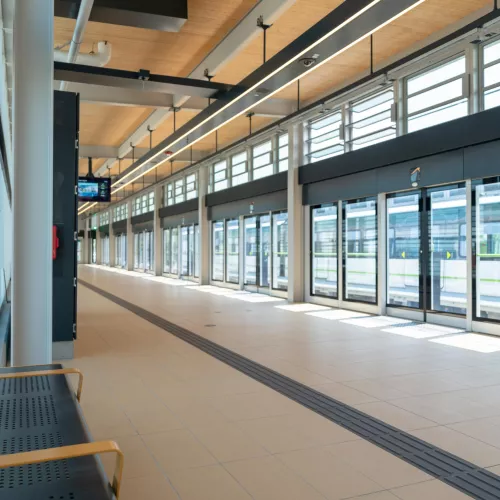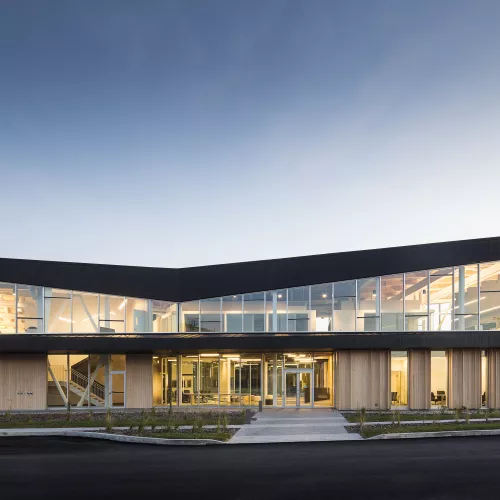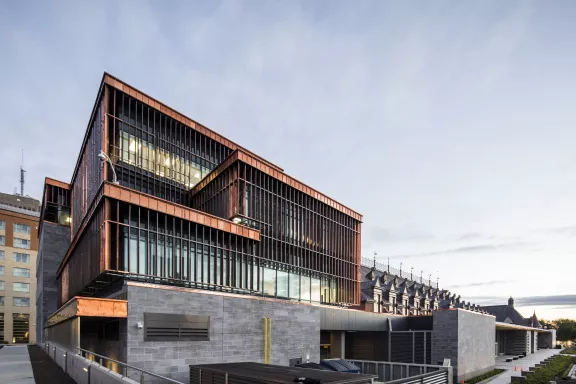
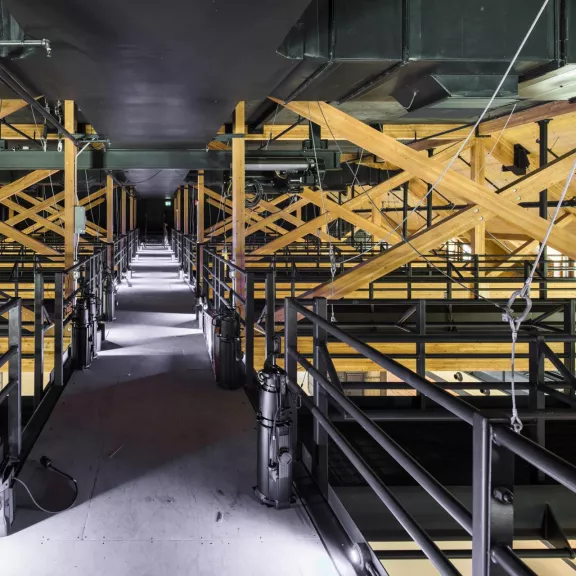
Being carbon neutral by 2050 is the ambitious goal that Canada and 120 other countries have set as a way to reduce the impacts of the current climate crisis. Businesses and communities must take action if we hope to transition to a low-carbon economy, and the construction industry has a key role to play in this transition. Accounting for 12% of GHG emissions in Canada, the infrastructure and buildings sector1 must adopt sustainable practices on a large scale to be part of the solution.
At Pomerleau, we are operating several initiatives to contribute to the goal of carbon neutrality, including designing and building sustainable infrastructures according to current and emerging market standards (LEED, Passive House, Carbon Neutral Building, Envision, etc.), proposing innovative construction methods such as prefabrication, and integrating low-carbon footprint materials and construction alternatives. Pomerleau is taking concrete steps to reduce its Scope 1 and 2 GHG emissions by 40% by 2030.
Mass Timber: A Sustainable Material of Excellence
Among the low-carbon materials available, mass timber construction has stood out in recent years, and its adoption by building owners and designers is accelerating. The facts are impressive: wood requires 6 times less carbon for its production than steel or concrete while storing 1 ton of CO2/m3 during its growth2. Already used for the construction of low-rise buildings in the form of panels or boards (the famous 2x4s!), interest is now focused on the technological and regulatory advances of recent years that now allow the construction of tall buildings.
At Pomerleau, we have been working with mass timber for more than 20 years, and we began our journey with the construction of the Centre de transformation du bois usiné de l'Université Laval - Pavillon Gene-H.-Kruger. Since then, we have completed more than 20 mass timber construction projects worth more than one billion dollars, including some landmark projects:
- The University of Toronto's Academic Wood Tower
- Fondaction CSN Building (2008-2009)
- Université Laval – PEPS Telus Soccer Stadium (2010-2011)
- The reconstruction of the Quebec City Armoury (2015-2018)
- The Videotron Center in Quebec City (2012-2015)
- Waskaganish Community Centre, Phase 1 and 2 (2011-2013, 2018-2021)
- Landsdowne Park redevelopment in Ottawa (2012-2014)
- Gros Morne Park Visitor Centre in Newfoundland
- Montreal REM stations
- South Burnaby Arena, BC
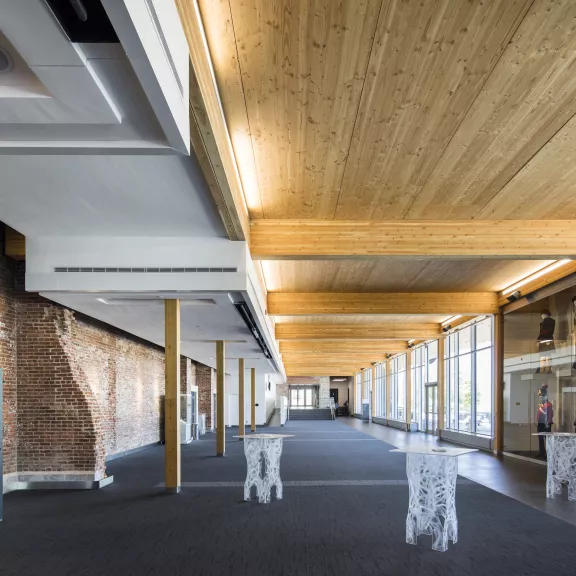
It has always been a priority for Pomerleau to include mass timber in our projects, especially when we are involved at an early stage in the design phase (for example for Design-Build projects). Our experts are working towards incorporating mass timber where it adds value to the projects since we already believe in the benefits of the material.
Technical Specificities for a Unique Material
The expertise acquired through these projects allows us to optimize our approach at all stages of the project, starting with the design. In addition to the structural features that allow us to achieve greater spans, we pay attention to the latest developments in wood frame construction standards and building codes. Throughout the projects we design or are designing, we focus on the optimization of the fire protection systems, which calls for a different approach compared to steel or concrete structures.
Our construction and assembly methods have also been adapted, and it is with this in mind that we have developed on-site techniques for controlling wood moisture. Among the solutions developed by our teams, we can count on strict control of the waterproofing of wood elements and a regular follow-up of exposure times and humidity readings using a hygrometer to ensure that the wood always remains in acceptable conditions. Being true to our value of innovation, we are now using wireless and connected remote sensors to monitor the humidity of timber elements in real time. Our project teams, material quality assurance teams, and partners are continually applying these learnings to future and current projects.
Always higher!
Pomerleau is at the forefront of mass timber construction projects by building the tallest wood tower in Canada, east of Vancouver. In 2023, our teams will begin construction of the University of Toronto Academic Wood Tower as a vertical extension to the existing Goldring Centre, located on the downtown campus. This project will join three other mass timber projects under construction in Newfoundland, Montreal, and Vancouver, demonstrating the reach of our expertise across the country.
To remain competitive and meet infrastructure performance objectives, the current popularity of mass timber construction must be accompanied by design optimization and thoughtful construction planning. This is exactly where Pomerleau offers a complete solution to our clients: an extensive network of architects, consultants, subcontracting partners, material and technology suppliers combined with our lessons learned in the field, and our in-house expertise in building modeling (BIM/VDC), life cycle assessment (LCA) and sustainable construction.
Building with wood in 2022 is a bold, logical, and attractive choice for all those who will have the opportunity to live, create and learn in these exceptional buildings. At Pomerleau, we are as eager as you are to think, design, optimize and build the future of mass timber, from coast to coast.
In 2022, we are seeing more and more owners adopt mass timber construction due to its many advantages, including biophilic design, reduced carbon footprint, and speed of construction. As one of Canada’s leading general contractors, Pomerleau is well positioned to leverage our experience in mass timber construction to deliver these types of projects across Canada.

